 Last additions - KANAGAWA 神奈川県 Last additions - KANAGAWA 神奈川県 |

Hula and cherry blossomsApr 07, 2006
|
|

Turning around at the end of the route.Apr 07, 2006
|
|
|

One of many daruma shops in the town.Apr 07, 2006
|
|

Amulets, votive tablets, etc., for sale by the shrine.Apr 07, 2006
|
|

Kanamara mikoshiApr 07, 2006
|
|

Elizabeth mikoshi carried by she-malesApr 07, 2006
|
|

Kanamara mikoshiApr 07, 2006
|
|

Maid with paws...Apr 07, 2006
|
|

Entering the main shopping streetApr 07, 2006
|
|

Elizabeth mikoshi carried by she-malesApr 07, 2006
|
|

Elizabeth mikoshi carried by she-malesApr 07, 2006
|
|

She-male (or maybe just a drag queen, I couldn't visually or physically confirm)Apr 07, 2006
|
|

They are shouting, "Dekkai-mara Dekkai-mara" which probably means "huge phallus."Apr 07, 2006
|
|

Portable shrine processionApr 07, 2006
|
|

Kanamara boat mikoshiApr 07, 2006
|
|
|
|

Kanayama Shrine's head priestApr 07, 2006
|
|

Head of the portable shrine processionTengu, shrine priest, and a little girl with an offertory tray. I put in 10 yen, and a shrine maiden came up to me and waved the sacred branch over my head as a blessing. She also gave me an amulet made of paper. I guess I'm fertile now...Apr 07, 2006
|
|

Tengu (nose is not shaped like a phallus)Apr 07, 2006
|
|

Portable shrine processionApr 07, 2006
|
|

Art work on the cartApr 07, 2006
|
|

Portable shrine processionApr 07, 2006
|
|
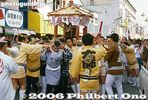
Old photoThis picture was taken in the 1980s.Apr 07, 2006
|
|

Portable shrine procession 神輿の巡幸Apr 07, 2006
|
|
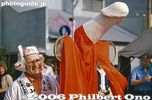
The red cloth is the blood after the demon inside the vagina bit the phallus (Old photo)This picture was taken in the 1980s.Apr 07, 2006
|
|

Heading out of the shrine (old photo)This picture was taken in the 1980s.Apr 07, 2006
|
|

Kanamara mikoshi salutes the Wakamiya Hachimangu ShrineApr 07, 2006
|
|

Heading out to the torii gate 神輿の巡幸Apr 07, 2006
|
|

And it leaves the shrine.Apr 07, 2006
|
|

Kanamara mikoshi salutes the Wakamiya Hachimangu ShrineApr 07, 2006
|
|

The main Kanamara mikoshi leaves last.Apr 07, 2006
|
|

Kanamara mikoshiApr 07, 2006
|
|

Kanamara mikoshiApr 07, 2006
|
|

The Elizabeth mikoshi pumping up and down as it makes it way to townApr 07, 2006
|
|

Phallus in the Kanamara boat mikoshiApr 07, 2006
|
|

The outlandish Elizabeth mikoshi carried by she-males.Apr 07, 2006
|
|
|

Kanamara boat mikoshiApr 07, 2006
|
|

People could borrow and wear kimono for free, courtesy of the shrine.The portable shrine procession is actually called a "costume parade." You can wear a mask or whatever and also wear a kimono (considered to be a costume) and join in the parade.Apr 07, 2006
|
|

The Kanamara boat mikoshi is the first to leave.Apr 07, 2006
|
|

The Kanamara boat mikoshi is the first to leave. 神輿の巡幸Apr 07, 2006
|
|

The crowd awaits the departure of the portable shrines to go on the procession around town.Apr 07, 2006
|
|

Happi coat with official logoApr 07, 2006
|
|

Free amazake (sweet sake). It's a white, creamy liquid served with small dried fish with wiggly tails. Sort of reminds you of something...Sperm!Apr 07, 2006
|
|

Lollipop, lollipop, oh lolly-lollipop (pop!)...From an old song. These lollipops were selling like hotcakes.Apr 07, 2006
|
|

Another phallus near Kanayama ShrineIt was pretty lonely, with no one paying attention to it.Apr 07, 2006
|
|

Shack for votive tabletsApr 07, 2006
|
|

Blacksmith's toolApr 07, 2006
|
|

Roof ridge emblemApr 07, 2006
|
|

Prayers for a child written on these votive tablets (ema)Apr 07, 2006
|
|

The old Kanayama ShrineApr 07, 2006
|
|

The old Kanayama ShrinePicture was taken in the 1980s.Apr 07, 2006
|
|

The old Kanayama ShrineApr 07, 2006
|
|

Inside Kanayama ShrineApr 07, 2006
|
|

Giving offerings inside Kanayama ShrineApr 07, 2006
|
|

Shrine maidenApr 07, 2006
|
|

Kanayama Shrine altar offeringsNotice the male and female mochi offering.Apr 07, 2006
|
|

Kanayama Shrine altarApr 07, 2006
|
|

Painting inside Kanayama ShrineApr 07, 2006
|
|

Inside Kanayama ShrineKanayama Shrine is dedicated to a pair of gods named Kanayama Hikonokami and Kanayama Himenokami 金山比古神(かなやまひこのかみ) 金山比売神(かなやまひめのかみ. According to legend, when the main Shinto god named Izanami gave birth to the God of Fire, her lower abdomen got burned. These two Kanayama gods helped to heal her birth wound. Thus, these two gods came to be known as the gods of childbirth and healing of the lower abdomen. They later came to be worshipped as fertility gods, protector of sexually-transmitted diseases (AIDS, etc.), and successful marriage. They are also the gods of bellows, so blacksmiths (who use bellows to fan the fire) also worship this shrine.Apr 07, 2006
|
|

Kanayama Shrine altarFlanked by penis statues on the left and right.Apr 07, 2006
|
|

Inside Kanayama ShrineApr 07, 2006
|
|

Ooohhh, ecstasy...Nah, just joking. She was actually just embarassed and spontaneously covered her face with a giggle. Obviously I have better shots of her with her cute face showing, but I'm not one to embarass people... Boy, I wish I took a video clip of this scene.
Actually, what happened is that a guy sat on this black penis before she did, and she saw that. So she imitated and sat on it too. Her female friend was taking her picture. Later they switched places and her friend, who was wearing a skirt and red net stockings, sat on it and posed for pictures.
Notice the zigzag white paper streamers. They indicate something which is sacred. So this penis is sacred, possessing a divine spirit. I can believe this because it draws so many people to it. It definitely has divine power. I mean it made this girl sit on it right?Apr 07, 2006
|
|

Licking it...Look at that tongue...Apr 07, 2006
|
|

Inside Kanayama Shrine 金山神社Kanayama Shrine is dedicated to a pair of gods named Kanayama Hikonokami and Kanayama Himenokami 金山比古神(かなやまひこのかみ) 金山比売神(かなやまひめのかみ. According to legend, when the main Shinto god named Izanami gave birth to the God of Fire, her lower abdomen got burned. These two Kanayama gods helped to heal her birth wound. Thus, these two gods came to be known as the gods of childbirth and healing of the lower abdomen. They later came to be worshipped as fertility gods, protector of sexually-transmitted diseases (AIDS, etc.), and successful marriage. They are also the gods of bellows (you can see it on the left of the fireplace above), so blacksmiths (who use bellows to fan the fire) also worship this shrine.Apr 07, 2006
|
|

Riding it...Obviously I have better shots of her with her cute face showing and both arms in the air, but I'm not one to embarass people...
It has been scientifically proven that sex is good for your health and beauty.Apr 07, 2006
|
|

Kanayama Shrine (right next to Wakamiya Hachimangu)Kanayama Shrine is dedicated to a pair of gods named Kanayama Hikonokami and Kanayama Himenokami 金山比古神(かなやまひこのかみ) 金山比売神(かなやまひめのかみ. According to legend, when the main Shinto god named Izanami gave birth to the God of Fire, her lower abdomen got burned. These two Kanayama gods helped to heal her birth wound. Thus, these two gods came to be known as the gods of childbirth and healing of the lower abdomen. They later came to be worshipped as fertility gods, protector of sexually-transmitted diseases (AIDS, etc.), and successful marriage. They are also the gods of the bellows, so blacksmiths (who use bellows to fan the fire) also worship this shrine.
Kanayama Shrine is a small shrine within the grounds of the larger Wakamiya Hachimangu Shrine. The Kanayama Shrine was completely rebuilt and reborn in 1999 into a completely unorthodox building which you see here. Modeled after a blacksmith's workshop, it is now a black, eight-sided building with steel paneling. Notice the penis monument on the lower right.Apr 07, 2006
|
|

Taiko drummers in front of Wakamiya HachimanguApr 07, 2006
|
|

Penis prayersThis penis monument (built in 1995 by a steel company) is next to Kanayama Shrine. This person praying is a Caucasian man, not a woman. I was aghast when he stood up and showed his manly face. His long blond hair made me think he was a woman...Apr 07, 2006
|
|

Wakamiya Hachimangu ShrineApr 07, 2006
|
|

Kanamara mikoshi かなまら神輿There are three portable shrines (called mikoshi). The Kanamara mikoshi (the original portable shrine), Kanamara-bune mikoshi (shaped like a boat), and Elizabeth mikoshi (pink giant). All three are carried during a procession around town. The Elizabeth mikoshi is carried by she-males. ("New half" in Japanese. Go ahead and laugh if you want.)Apr 07, 2006
|
|

Ready for the processionApr 07, 2006
|
|

The main Kanamara mikoshi かなまら神輿There are three portable shrines (called mikoshi). The Kanamara mikoshi (the original portable shrine), Kanamara-bune mikoshi (shaped like a boat), and Elizabeth mikoshi (pink giant). All three are carried during a procession around town. The Elizabeth mikoshi is carried by she-males. ("New half" in Japanese. Go ahead and laugh if you want.)Apr 07, 2006
|
|

Two of the portable shrines ready to go. In Japanese, the festival is nicknamed "Chinko Matsuri" (Phallus Festival) ちんこ祭り.There are three portable shrines (called mikoshi). The Kanamara mikoshi (the original portable shrine), Kanamara-bune mikoshi (shaped like a boat), and Elizabeth mikoshi (pink giant). All three are carried during a procession around town. The Elizabeth mikoshi is carried by she-males. ("New half" in Japanese. Go ahead and laugh if you want.)Apr 07, 2006
|
|

Elizabeth portable shrine was donated by a drag queen club called Elizabeth Kaikan in Kameido, Tokyo.There are three portable shrines (called mikoshi). The Kanamara mikoshi (the original portable shrine), Kanamara-bune mikoshi (shaped like a boat), and Elizabeth mikoshi (pink giant). All three are carried during a procession around town. The Elizabeth mikoshi is carried by she-males. ("New half" in Japanese. Go ahead and laugh if you want.)Apr 07, 2006
|
|

Kanamara Boat portable shrine (boat-shaped loaded with a phallus) was donated by a steel company. かなまら舟神There are three portable shrines (called mikoshi). The Kanamara mikoshi (the original portable shrine), Kanamara-bune mikoshi (shaped like a boat), and Elizabeth mikoshi (pink giant). All three are carried during a procession around town. The Elizabeth mikoshi is carried by she-males. ("New half" in Japanese. Go ahead and laugh if you want.)Apr 07, 2006
|
|

Pubic hair not included. Perhaps that's why it doesn't look so obscene.Apr 07, 2006
|
|

Elizabeth portable shrine エリザベス神輿Before the portable shrine is taken out to be paraded around town, the god of the shrine must be transferred to it. This is what the head priest is doing.
There are three portable shrines (called mikoshi). The Kanamara mikoshi (the original portable shrine), Kanamara-bune mikoshi (shaped like a boat), and Elizabeth mikoshi (pink giant). All three are carried during a procession around town. The Elizabeth mikoshi is carried by she-males. ("New half" in Japanese. Go ahead and laugh if you want.)Apr 07, 2006
|
|
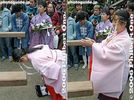
Prayers to the Elizabeth portable shrine エリザベス神輿Before the portable shrine is taken out to be paraded around town, the god of the shrine must be transferred to it. This is what the head priest is doing.Apr 07, 2006
|
|

Prayers to the Elizabeth portable shrine エリザベス神輿Before the portable shrine is taken out to be paraded around town, the god of the shrine must be transferred to it. This is what the head priest is doing.Apr 07, 2006
|
|

Waving the sacred sakaki branch to bless all of usApr 07, 2006
|
|

A representative of the shrine parishioners offer prayers.Apr 07, 2006
|
|

Prayers to the Kanamara-bune mikoshi かなまら舟神輿Before the portable shrine is taken out to be paraded around town, the god of the shrine must be transferred to it. This is what the head priest is doing.Apr 07, 2006
|
|

Prayers to the Kanamara Boat portable shrine かなまら舟神輿 神輿御霊入れ式Before the portable shrine is taken out to be paraded around town, the god of the shrine must be transferred to it. This is what the head priest is doing.
There are three portable shrines (called mikoshi). The Kanamara mikoshi (the original portable shrine), Kanamara-bune mikoshi (shaped like a boat), and Elizabeth mikoshi (pink giant). All three are carried during a procession around town. The Elizabeth mikoshi is carried by she-males. ("New half" in Japanese. Go ahead and laugh if you want.)Apr 07, 2006
|
|

The shrine's head priest transfers the deity to the Kanamara Boat portable shrine (boat-shaped loaded with a phallus) かなまら舟神輿Before the portable shrine is taken out to be paraded around town, the god of the shrine must be transferred to it. This is what the head priest is doing.Apr 07, 2006
|
|
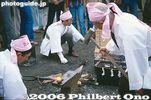
Forging a steel phallus (old photo)The demon living in the vagina of the women bit the man's phallus each time. So one guy made a steel phallus and the demom broke his teeth.Apr 07, 2006
|
|

Standing room only at Wakamiya ShrineApr 07, 2006
|
|

Packed path to Wakamiya Hachimangu ShrineApr 07, 2006
|
|
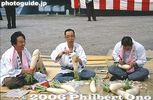
Carving daikon. Since some activities are conducted on the ground, the festival is also called Jibeta (Ground) Matsuri.Once upon a time, the festival was still mostly a local event with much fewer people.Apr 07, 2006
|
|

Carving daikon. Anybody can join in and carve. 大根削りLater to be auctioned off.Apr 07, 2006
|
|

The festival is wildly popular with people from overseas.The shrine had various phallus props to pose with.Apr 07, 2006
|
|

Dickhead hat. Actually, I don't know what they call it, but that's what I call it.Apr 07, 2006
|
|
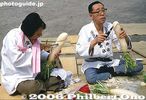
Carving daikon (old photo). These men were really good at carving the daikon.Apr 07, 2006
|
|

Pumping (or humping) the...Apr 07, 2006
|
|

Shrine banners and cherries in full bloomThe red banner says "Kanayama Jinja" with an phallus (erect) logo on the top.Apr 07, 2006
|
|

Kanayama Jinja Shrine is a small shrine within the grounds of the Wakamiya Hachimangu Shrine near Kawasaki Daishi Station. On the first Sun. of April, it holds this now-famous Kanamara Festival nicknamed the Phallus or Fertility Festival. Festival starts at 11 am. But a large crowd was already there well before that time. Entrance to shrine on the day of the Kanamara Festival. (If you're below age 18, please leave now.)Apr 07, 2006
|
|

Inside the Great Buddha (head portion)Jan 22, 2006
|
|

Jan 22, 2006
|
|
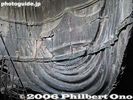
Inside the Great Buddha (hands and lap)Jan 22, 2006
|
|

Exterior of Great Buddha, KamakuraJan 22, 2006
|
|

Jan 22, 2006
|
|
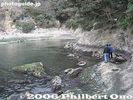
Rough trailJan 22, 2006
|
|

Finally back to civilizationJan 22, 2006
|
|

Other side of the islandJan 22, 2006
|
|

Hiking around the island (not recommended). There is a nice path going around half the island. But the other half lacks a real path. It is somewhat risky.Jan 22, 2006
|
|

Cave at EnoshimaJan 22, 2006
|
|
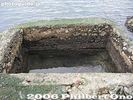
Fishing holeJan 22, 2006
|
|

May 07, 2005
|
|

EntertaimentMay 07, 2005
|
|
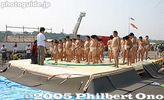
Children's sumo. Zama had a variety of side events.May 07, 2005
|
|

DisassemblyMay 07, 2005
|
|

May 07, 2005
|
|

The kite pullers can only run so far (about 50 meters or so). After that, if the wind doesn't kick in, the kite falls back down.May 07, 2005
|
|

May 07, 2005
|
|

Rope anchorMay 07, 2005
|
|

Rope anchorMay 07, 2005
|
|
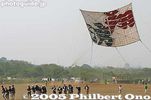
May 07, 2005
|
|

May 07, 2005
|
|
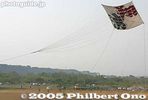
Zama's kite apparently was lighter than Sagamihara's kite because it went up much higher under the same wind conditions.May 07, 2005
|
|

May 07, 2005
|
|
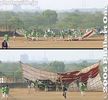
May 07, 2005
|
|

Lift off despite weak windsMay 07, 2005
|
|
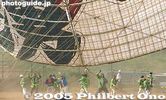
May 07, 2005
|
|
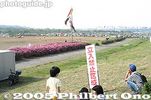
Do not enter sign. In 2004, on a very windy day (almost typhoon strength), Zama's giant kite broke in the air and crashed to the ground onto spectators (who got hurt) on the side, right beyond the carp streamers in this picture. So from 2005, they have become very strict and cordoned off the area where the kite crashed.May 07, 2005
|
|

May 07, 2005
|
|

Ready and all clearMay 07, 2005
|
|

Corner rope workMay 07, 2005
|
|

May 07, 2005
|
|
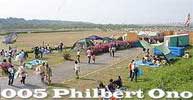
The following photos were taken on May 5, 2005. The site is on a baseball field, very dusty. The site is directly south and downstream from the Sagamihara kite festival site.It was a great idea to hold both kite festivals on the same days. We could see both in one day.May 07, 2005
|
|

May 07, 2005
|
|

May 07, 2005
|
|

The kite went back down almost immediately after hovering a few feet above ground.May 07, 2005
|
|

Inadequate winds. The kite struggles to lift off.May 07, 2005
|
|

May 07, 2005
|
|

May 07, 2005
|
|

The site is cleared of people before the launch.May 07, 2005
|
|
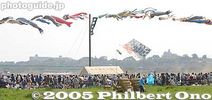
Sagamihara city is adjacent to Zama city which also held their own giant kite festival on the same day adjacent to Sagamihara's site. This is a launch of Zama's giant kite which soon went back to the ground due to inadequate winds.May 07, 2005
|
|

Spectators watch along the side and rear.May 07, 2005
|
|

May 07, 2005
|
|

May 07, 2005
|
|

Moving the giant kite to launch siteMay 07, 2005
|
|

Bamboo poles used to prop up the giant kite.May 07, 2005
|
|

AnchorMay 07, 2005
|
|

Preparing the big one.May 07, 2005
|
|

Successful flightMay 07, 2005
|
|

May 07, 2005
|
|
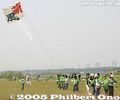
May 07, 2005
|
|

Take off of another smaller kiteMay 07, 2005
|
|

May 07, 2005
|
|

May 07, 2005
|
|
|

Take off of a smaller kiteMay 07, 2005
|
|

Entertainment during Sagami Giant Kite FestivalMay 07, 2005
|
|

May 07, 2005
|
|
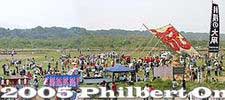
Sagami Giant Kite festival is held annually on May 4 and 5 along the Sagami River bank. The site is near JR Sobudaishita (相武台下) on the JR Sagami Line.May 07, 2005
|
|

Rear viewMay 07, 2005
|
|

May 07, 2005
|
|

Lean-to shade.May 07, 2005
|
|

May 07, 2005
|
|
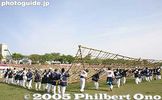
May 07, 2005
|
|

DisassemblyThe paper is actually large strips that can be removed and rolled up.May 07, 2005
|
|

May 07, 2005
|
|

May 07, 2005
|
|

May 07, 2005
|
|

May 07, 2005
|
|

Rope anchorMay 07, 2005
|
|

Beautiful lavendarMay 07, 2005
|
|
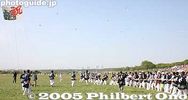
May 07, 2005
|
|

May 07, 2005
|
|
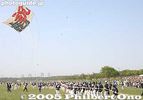
May 07, 2005
|
|
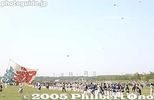
Another launchThey fly the kite a few times during the festival days.May 07, 2005
|
|

Yokaichi's anchor truckMay 07, 2005
|
|

TakoKites in the shape of an octopus is common because the Japanese word for kite is "tako" which is the same pronunciation for the word octopus in Japanese.May 07, 2005
|
|

Guest kite from Yokaichi, Shiga PrefectureThis is a smaller version of their giant kite. Yokaichi (Higashi Omi) also holds a giant kite festival in May.May 07, 2005
|
|

May 07, 2005
|
|

Kite pullersMay 07, 2005
|
|

And we have lift off!May 07, 2005
|
|
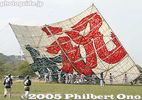
May 07, 2005
|
|
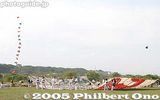
May 07, 2005
|
|

Moving the kite to launch pointMay 07, 2005
|
|

May 07, 2005
|
|

May 07, 2005
|
|

May 07, 2005
|
|

May 07, 2005
|
|

May 07, 2005
|
|
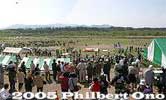
Panorama of festival site.May 07, 2005
|
|

Preparing the giant kiteMay 07, 2005
|
|
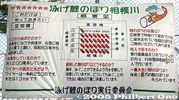
StatisticsMay 06, 2005
|
|

Cable anchorMay 06, 2005
|
|

Along the river were food stalls.May 06, 2005
|
|

Festival siteMay 06, 2005
|
|

The longest carp is 10 meters.May 06, 2005
|
|

Koi-nobori carp streamers over Sagami River. Also see the video at YouTube.May 06, 2005
|
|

May 06, 2005
|
|

May 06, 2005
|
|

Sagami River Koi-noboriMay 06, 2005
|
|

May 06, 2005
|
|

May 06, 2005
|
|

May 06, 2005
|
|

The cable length is 250 meters and 13mmm thick. There are about 1,200 carp streamers. They are reused every year and donated by local families. (I also noticed a few advertising carps.)May 06, 2005
|
|

There are five rows of streamers. In Japan, the koi carp is regarded as a symbol of valiant manhood because it swims up the river against the rapids. May 06, 2005
|
|

From late April to early May, five long strings of giant carp streamers swim in the air high above the Sagami River in Sagamihara, Kanagawa. This event was started in 1988.May 06, 2005
|
|

KnockersWhen they carry the mikoshi, a pair of knockers on both sides the mikoshi are struck to make a rhythmic sound.Jul 12, 2004
|
|

Jul 12, 2004
|
|

Parading along a shopping streetJul 12, 2004
|
|

Koyurugi ShrineJul 12, 2004
|
|

Koyurugi Shrine lookoutThe shrine is built atop a cliff overlooking the ocean, and there's small lookout offering sweeping view with Enoshima in the distance.Jul 12, 2004
|
|

Enoshima from Koyurugi Shrine lookoutJul 12, 2004
|
|

Secondary shrinesJul 12, 2004
|
|

Entrance to Koyurugi ShrineIt is dedicated to the sea goddess.Jul 12, 2004
|
|

Streetcar breakJul 12, 2004
|
|

Mikoshi face-offThe shrine from Yasaka Shrine on Enoshima is the male (left), and the mikoshi from Koyurugi Shrine (foreground) is female.Jul 12, 2004
|
|

Tram breakPart of the procession route also happened to be the Enoden streetcar route so we had to make way for the passing streetcar every 15 min. or so. There were streetcar personnel who blew their loud whistles whenever a streetcar was to pass through. I got scolded for sticking out my head to take this shot. Jul 12, 2004
|
|
|

Passing by Ryukoji TempleJul 12, 2004
|
|

Passing Enoshima StationJul 12, 2004
|
|

Jul 12, 2004
|
|

Jul 12, 2004
|
|

Crossing overJul 12, 2004
|
|

Mikoshi made of acornsJul 12, 2004
|
|

Jul 12, 2004
|
|

Enoshima's main dragJul 12, 2004
|
|

Jul 12, 2004
|
|

Entrance to Yasaka ShrineJul 12, 2004
|
|

Jul 12, 2004
|
|

Jul 12, 2004
|
|

Jul 12, 2004
|
|

Jul 12, 2004
|
|

Jul 12, 2004
|
|

Blessings at seaThe mikoshi and bearers are blessed by a shrine priest on a boat wielding a sacred staff.Jul 12, 2004
|
|

At seaShrine helpers on a boat splash buckets of sea water on the mikoshi bearers.Jul 12, 2004
|
|
|
|

Down rampJul 12, 2004
|
|

Jul 12, 2004
|
|

Water's edgeJul 12, 2004
|
|

Jul 12, 2004
|
|

Jul 12, 2004
|
|

Jul 12, 2004
|
|

Entrance to Enoshima's main drag. After you pass through this torii, you walk uphill along a narrow road lined with tourist souvenir shops.Jul 12, 2004
|
|

Jul 12, 2004
|
|

Jul 12, 2004
|
|

Preparing for the seaDuring a break, the mikoshi is prepared for a run in the ocean.Jul 12, 2004
|
|

Jul 12, 2004
|
|

Tengu manIn the searing heat of summer, this costume must be unbearable.Jul 12, 2004
|
|

Jul 12, 2004
|
|

The festival is actually held from the first to second Sunday in July. Eighth day is the main day.The festival procession comes toward Enoshima's gateway which is the Seido no Torii (青銅の鳥居) gate.
This day-long festival starts at 9:30 am at Enoshima's Hetsunomiya Shrine. A large mikoshi (portable shrine) from Yasaka Shrine is carried from the shrine to Koyuguri Shrine on the mainland. Along the way, the mikoshi is carried into the ocean. On the mainland, the Yasaka mikoshi is met with a mikoshi from Koyuguri Shrine. They then parade together along a shopping street before the Yasaka mikoshi goes back to Enoshima at around 6 pm.Jul 12, 2004
|
|

Bridge to Enoshima. Two bridges, one for vehicles and the other for pedestrians, enable access to this small and charming island.Jul 12, 2004
|
|
| 3524 files on 14 page(s) |
 |
 |
 |
 |
14 |
|